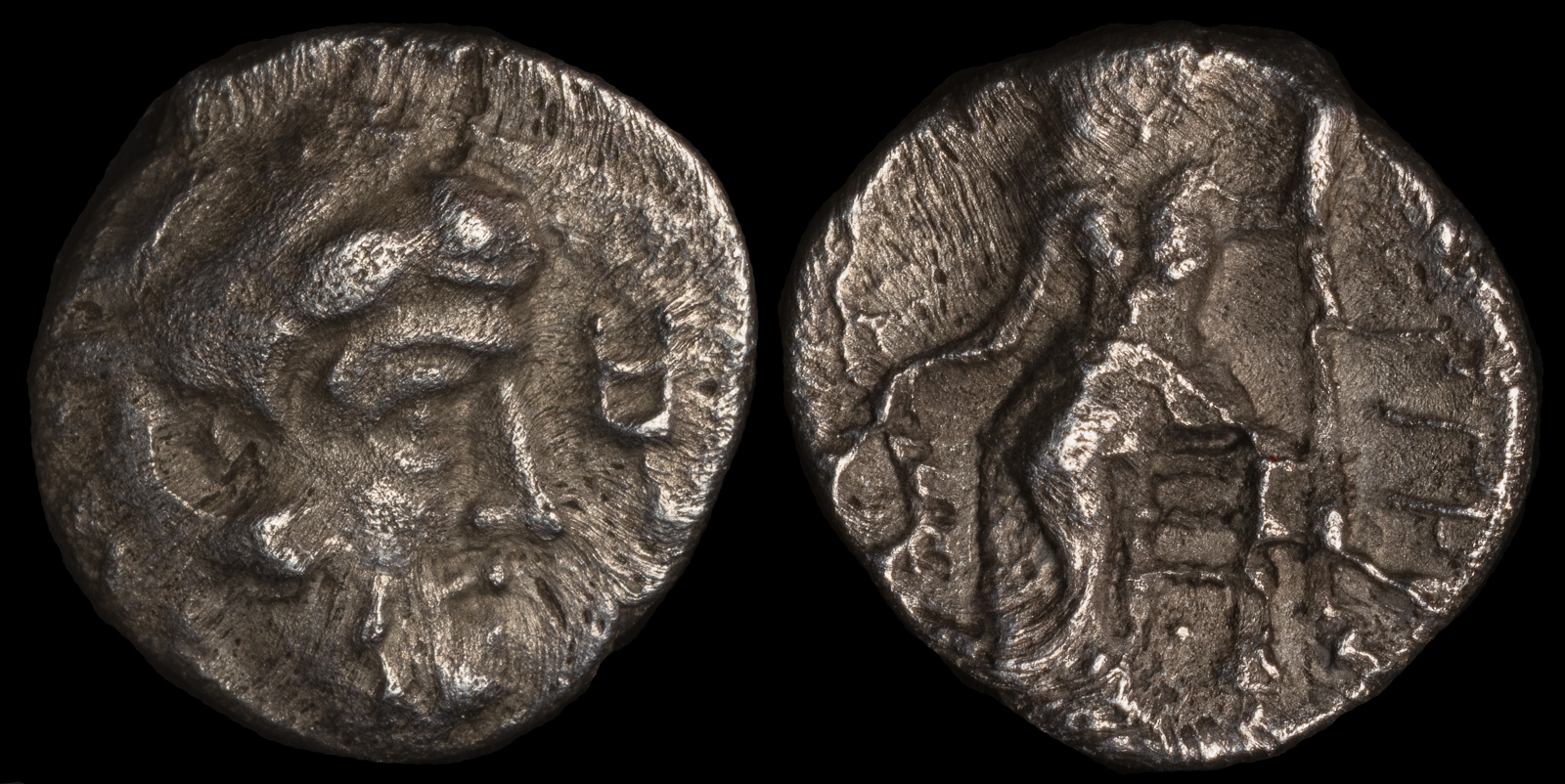
Cyrrhestica, Bambyke-Manbog
Circa 330 BCE
AR Obol .51g, 9mm
Obv: Unknown portrait facing left. U monogram of Manbog right.
Rev: Artagatis enthroned left, wearing long dress tied by a belt; scepter in left hand, wreath in outstretched right
unpublished
This coin gave me quite a bit of anguish in identifying, but with a great deal of help I managed to get it, and I was overwhelmingly satisfied with the result.
They key is the little “bucket” symbol to the right of the portrait on the obverse. This is heavily attributed to Bambyke-Manbog, a kingdom that existed around the time of Alexander the Great centered at Cyrrhestica. The area has a fascinating tradition regarding coins, and it’s thought that some of their coins served as models for Alexander the Great‘s later famed coinage.
The following was my logic for the attribution:
The presence of the ‘U’ monogram on the obverse. While Andrade persuasively argues that not every coin with this mark is from Cyrrhestica/Manbog, it’s well associated with that city.
The obverse design matches almost exactly that of a known Manbog fraction – https://www.acsearch.info/search.html?id=8778343. While Andrade believes it was not minted by Seleukos but was instead from the time of Alexander, in both coins he/she is holding a wreath.
Andrade lists 16 known types of stater/didrachm but only two fractions. I highly doubt that there would be so few fractions. We just haven’t covered them.
In terms of the inscription, I still don’t know. It does seem to match the ‘bdhdd (Abdhadad) I’ve seen on some of Manbog’s coins, but it’s difficult to say.
Another interesting fact is this coin may be unique. At least, I haven’t found a similar one either for sale or mentioned in the literature.
The city is located roughly where the modern Manbij is.
Relevant Resources
Manbog annexed to the Assyrians.
The Assyrian king Tiglath-Pileser III conquers Manbog. Byblos becomes a tributary.
The Roman general Crassus sacks the temple at Manbog on his way to the Parthians.